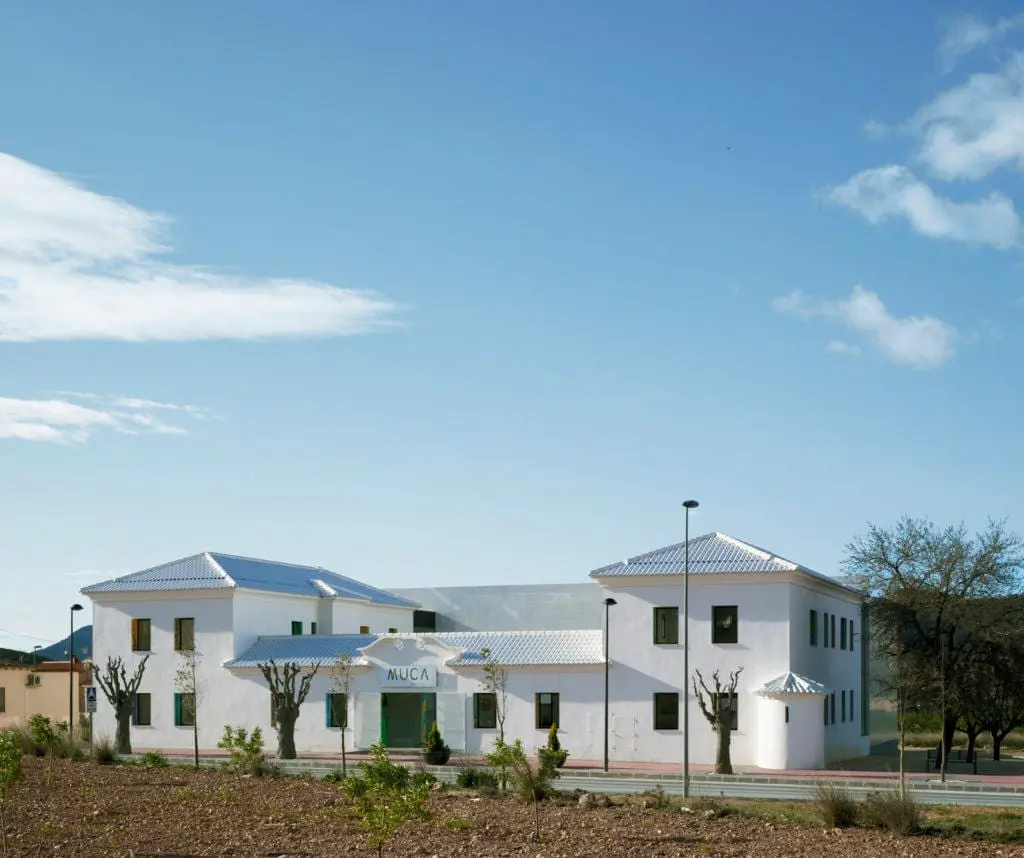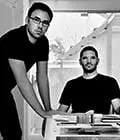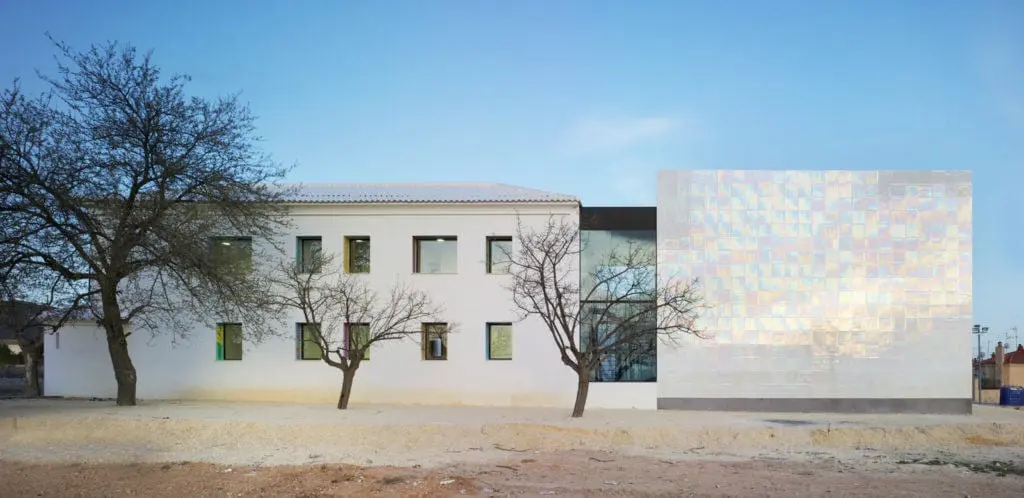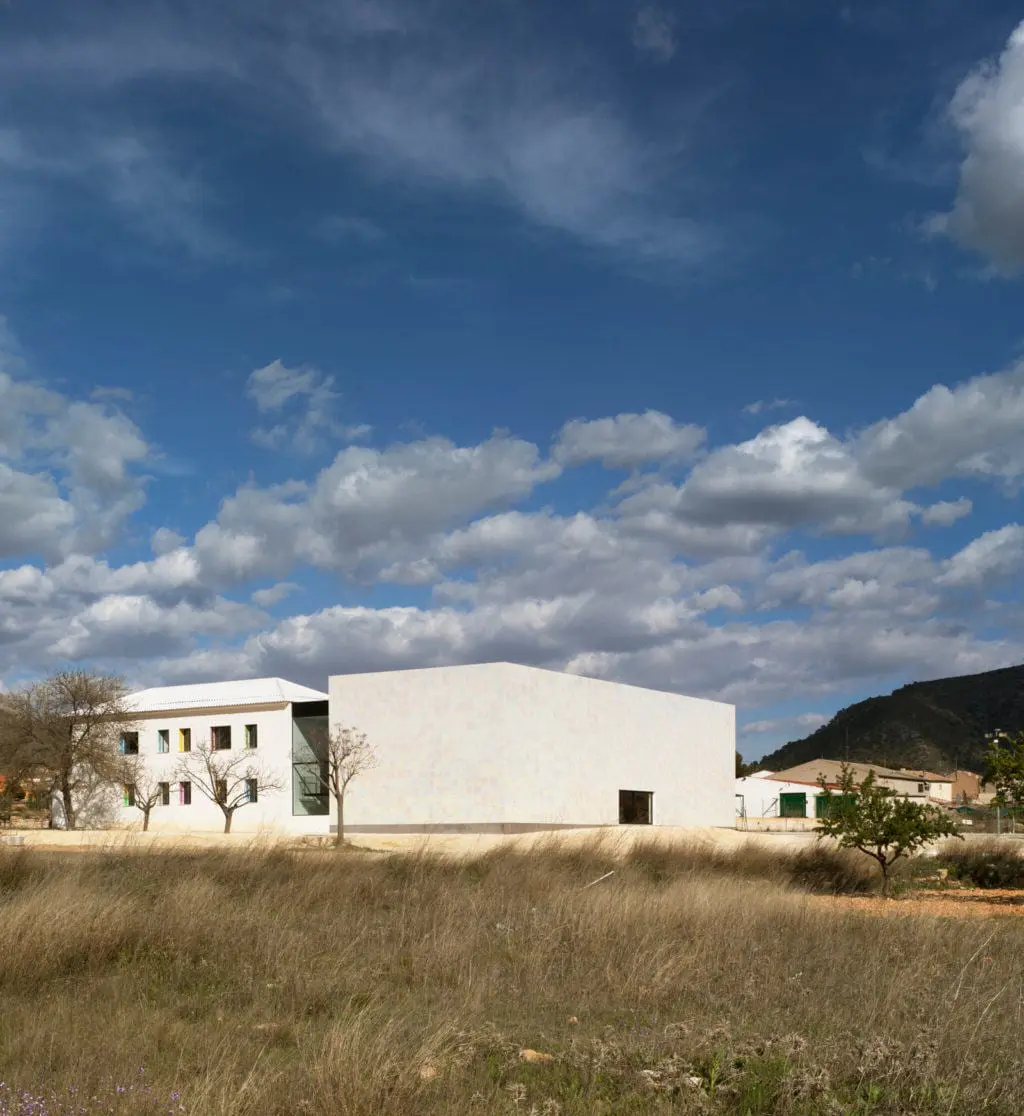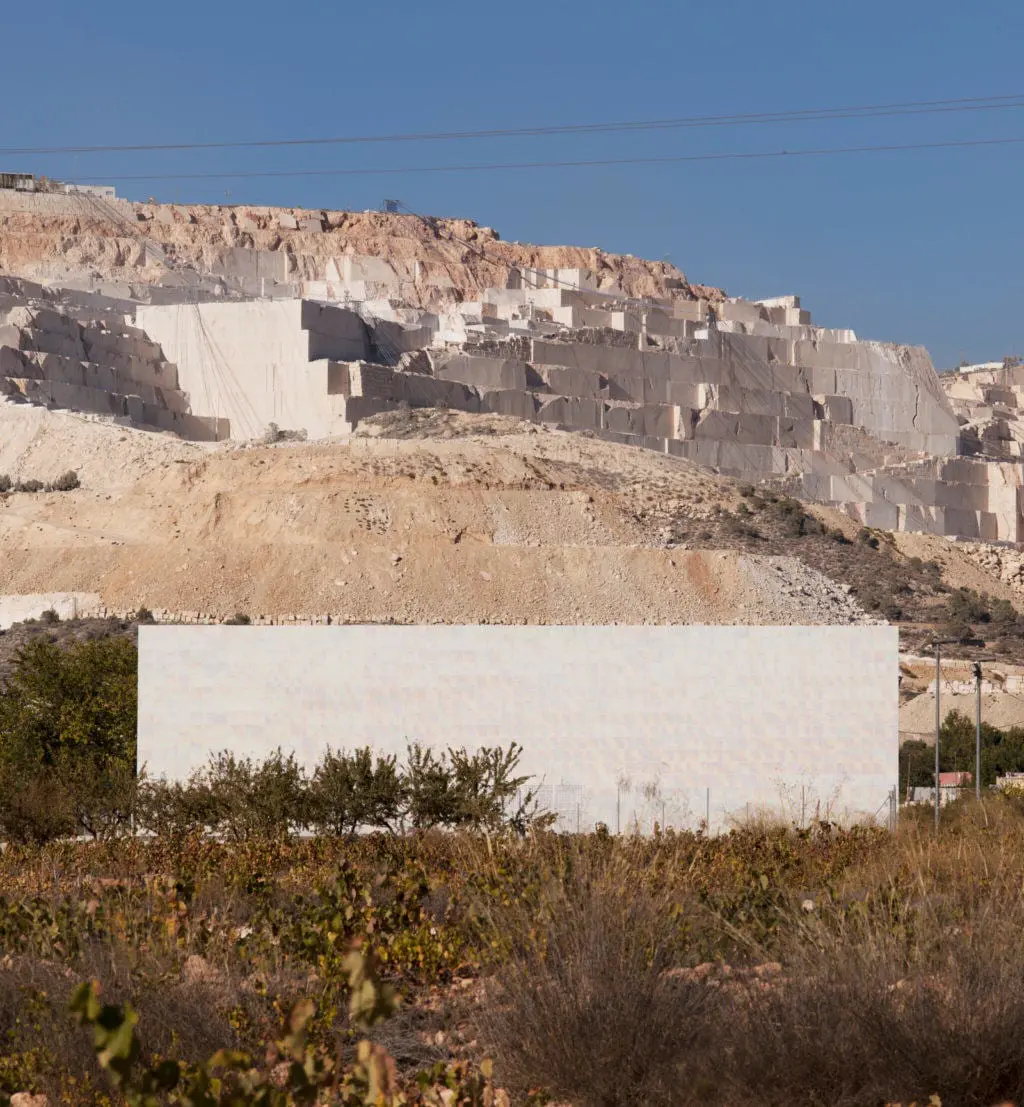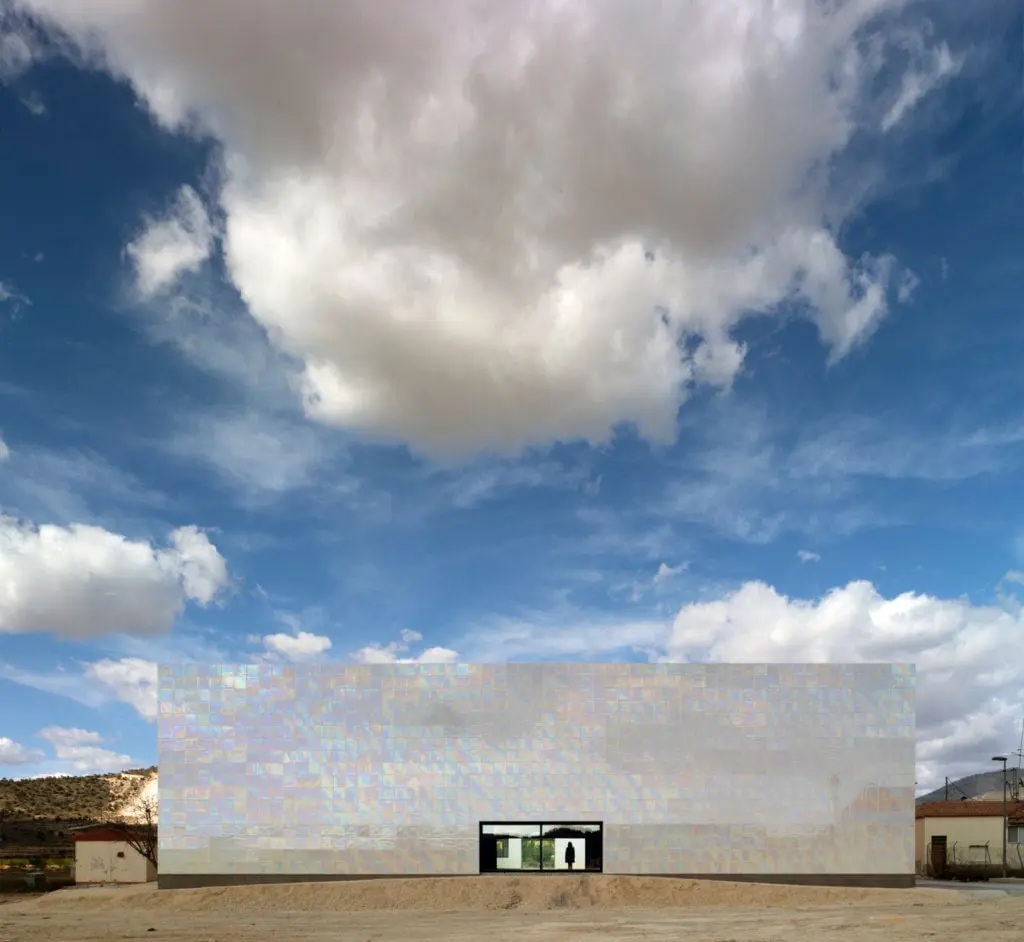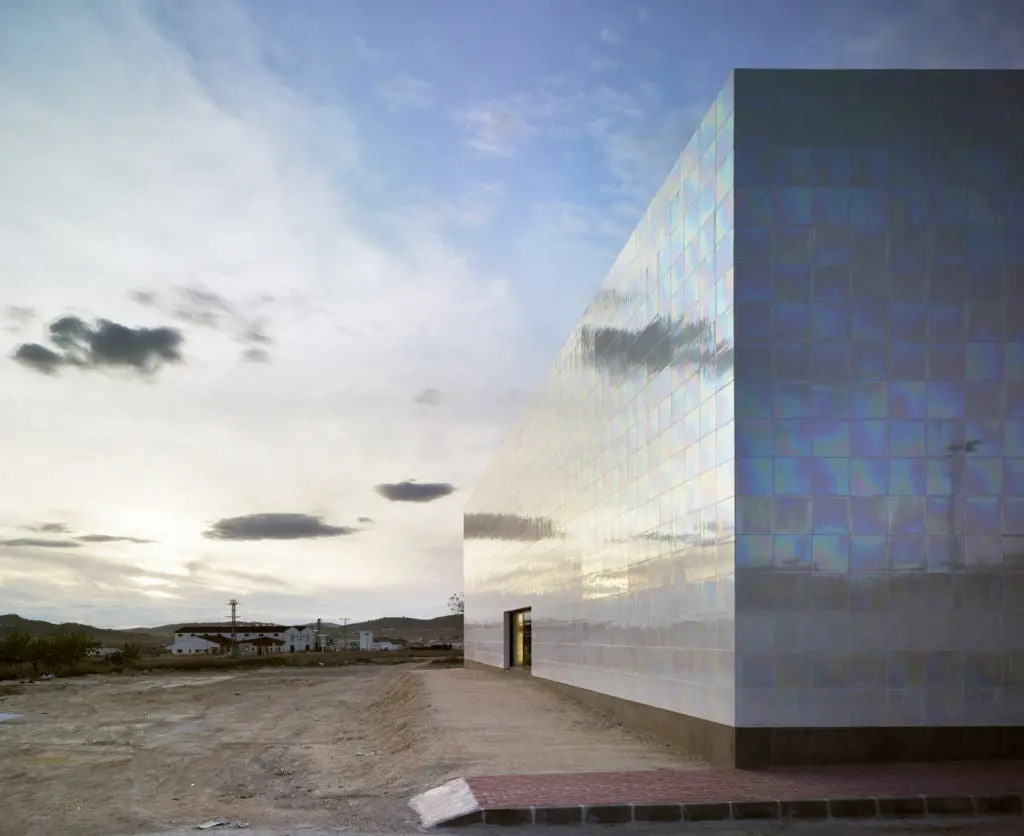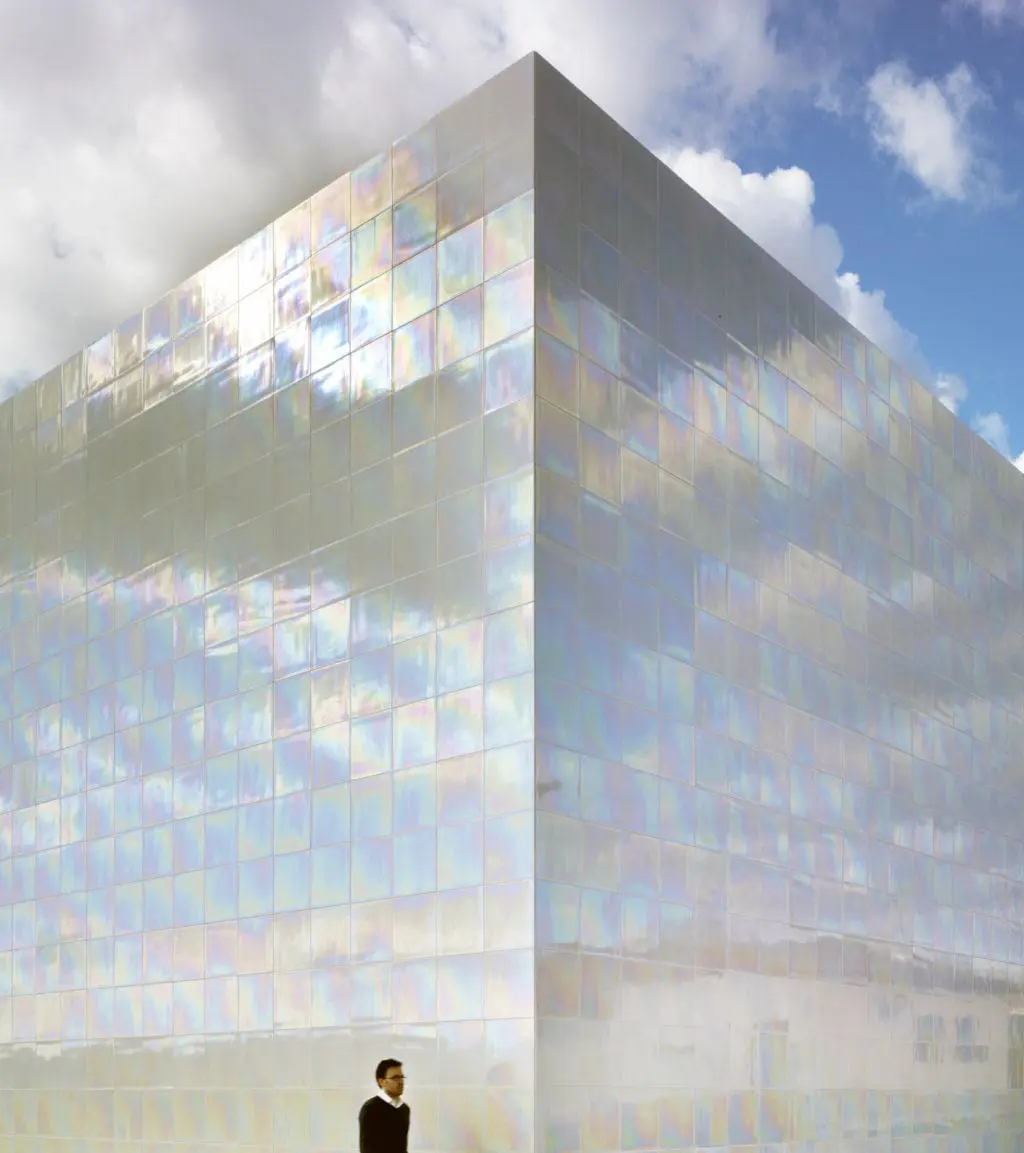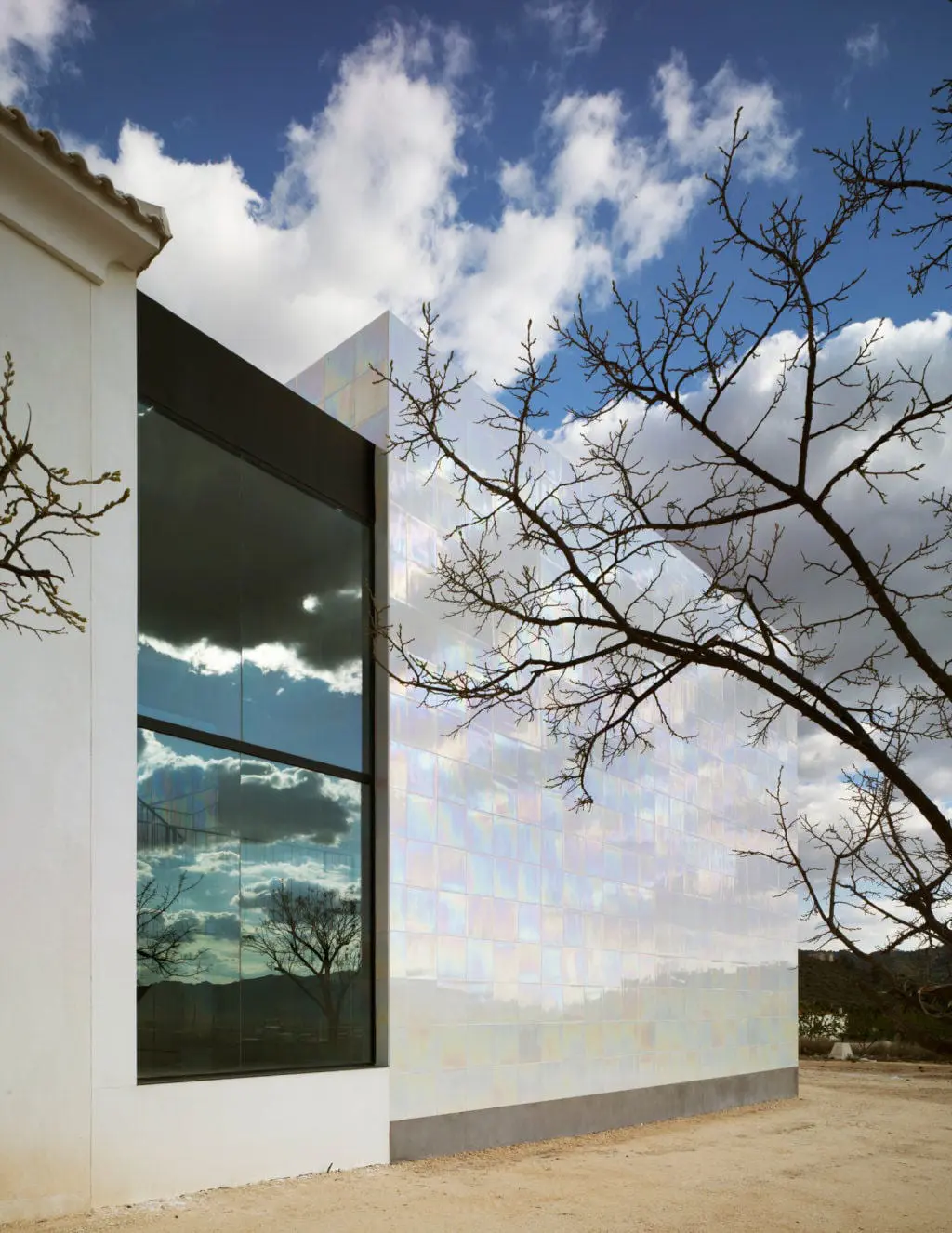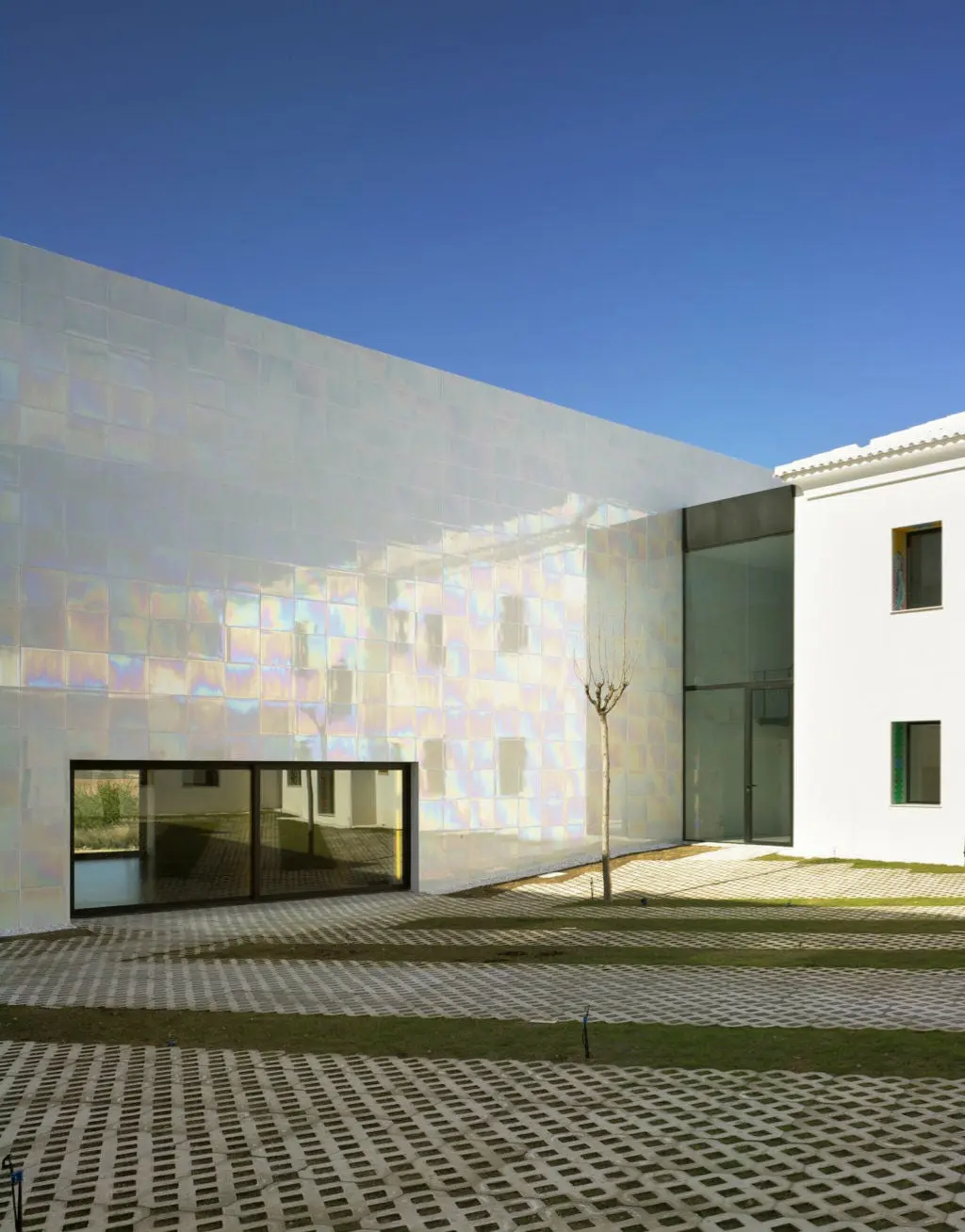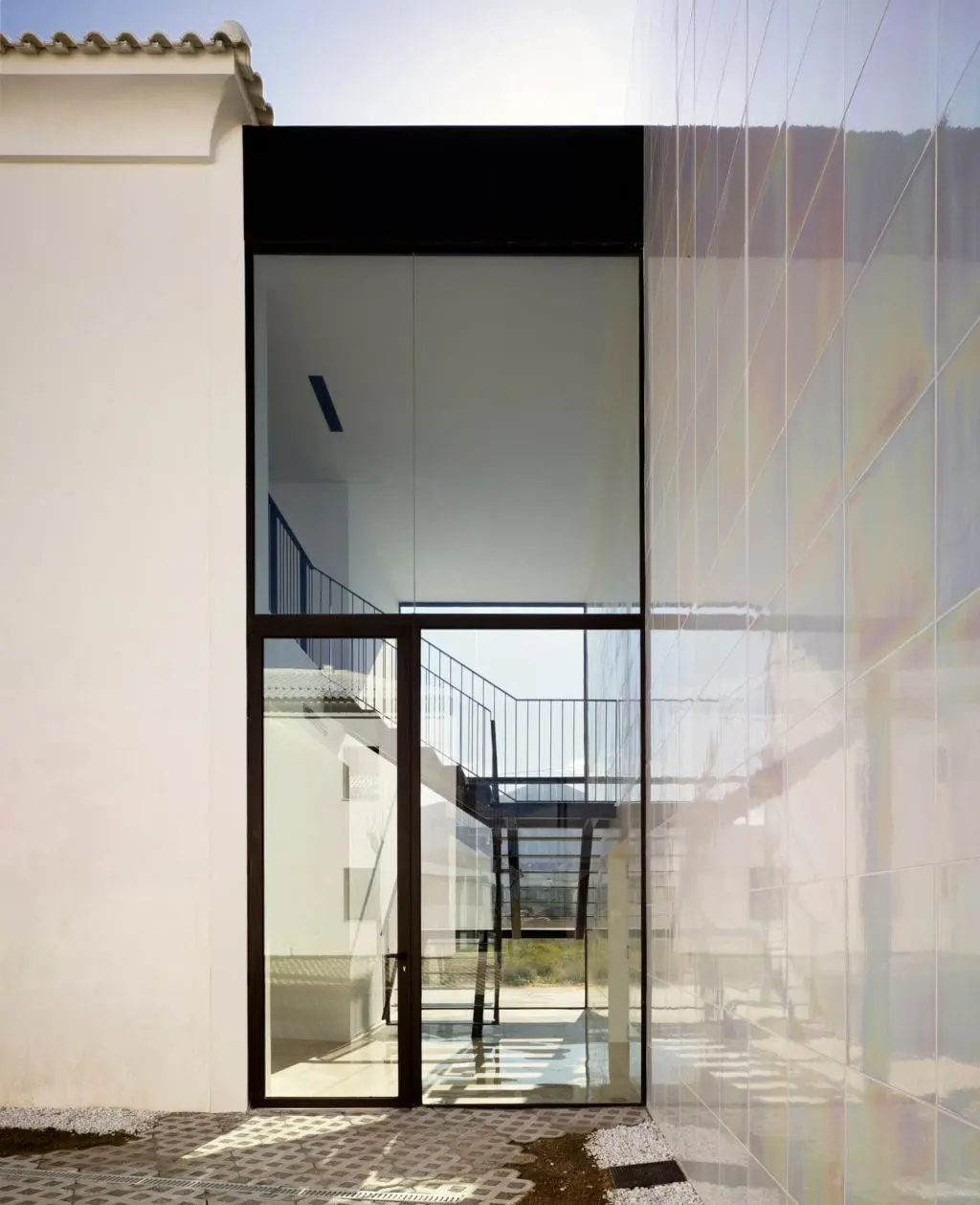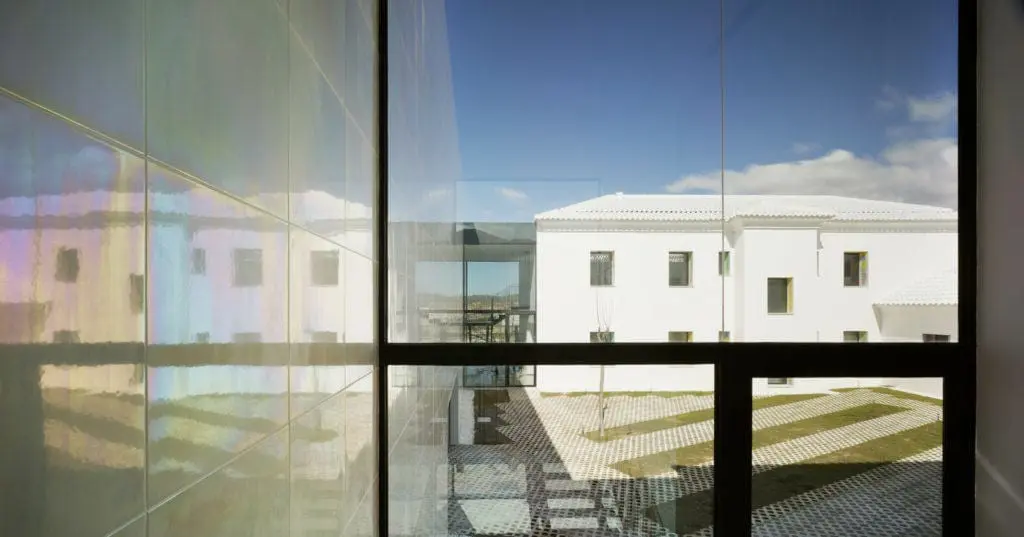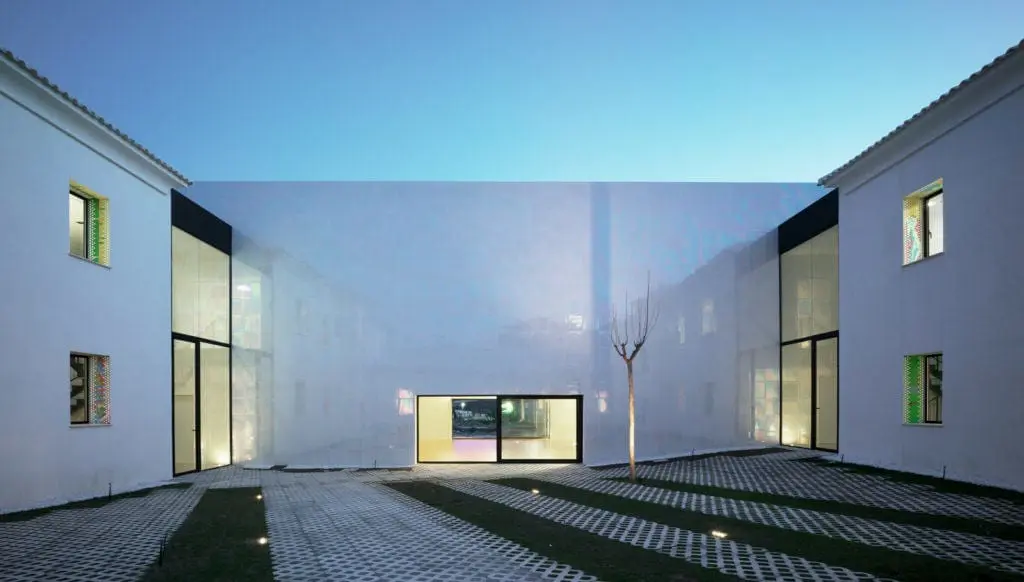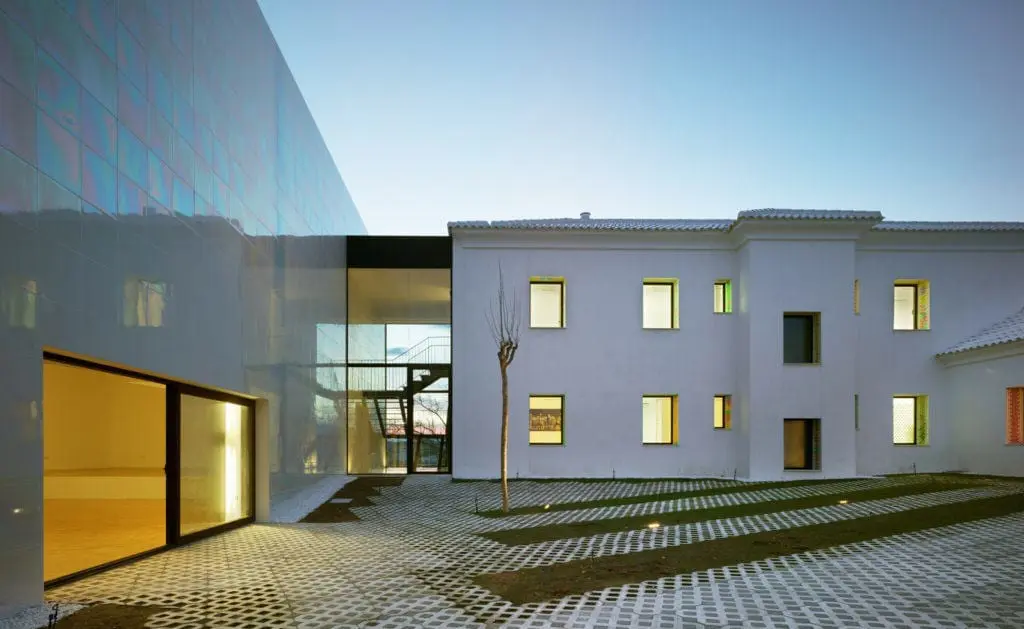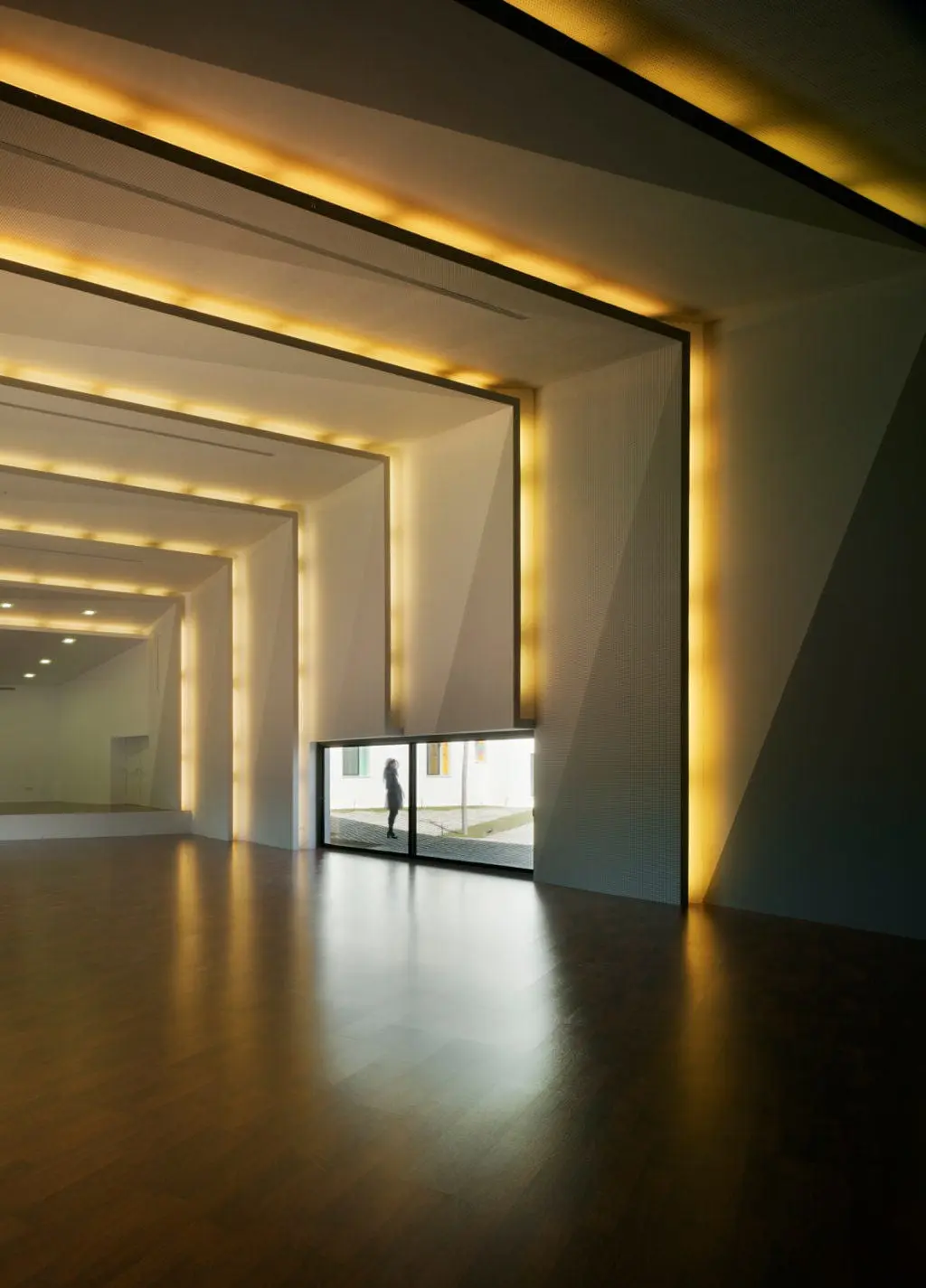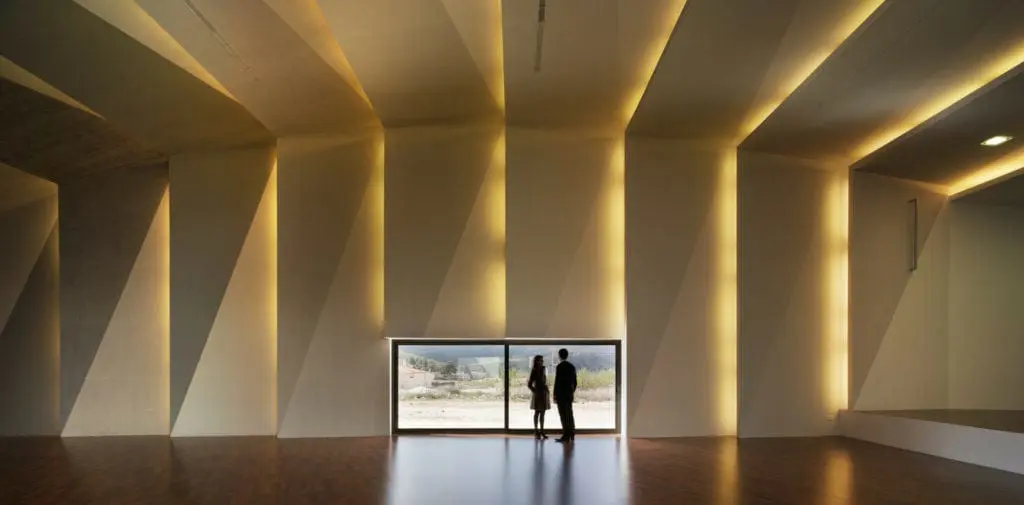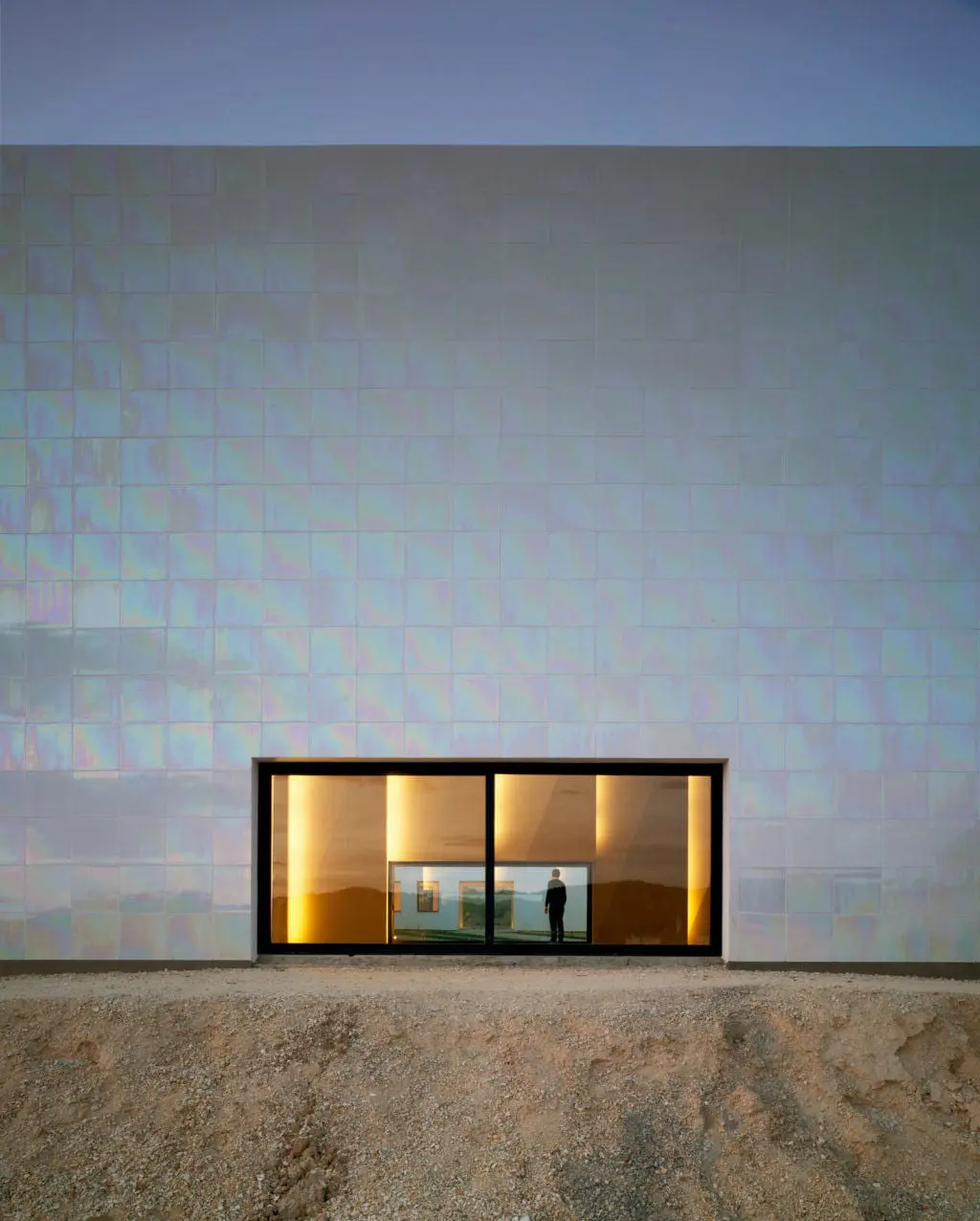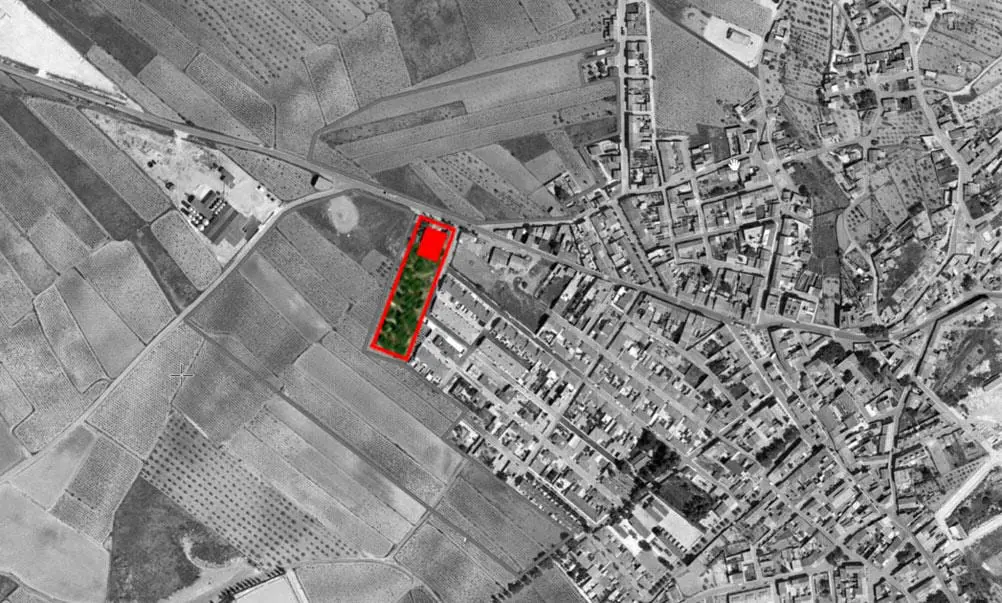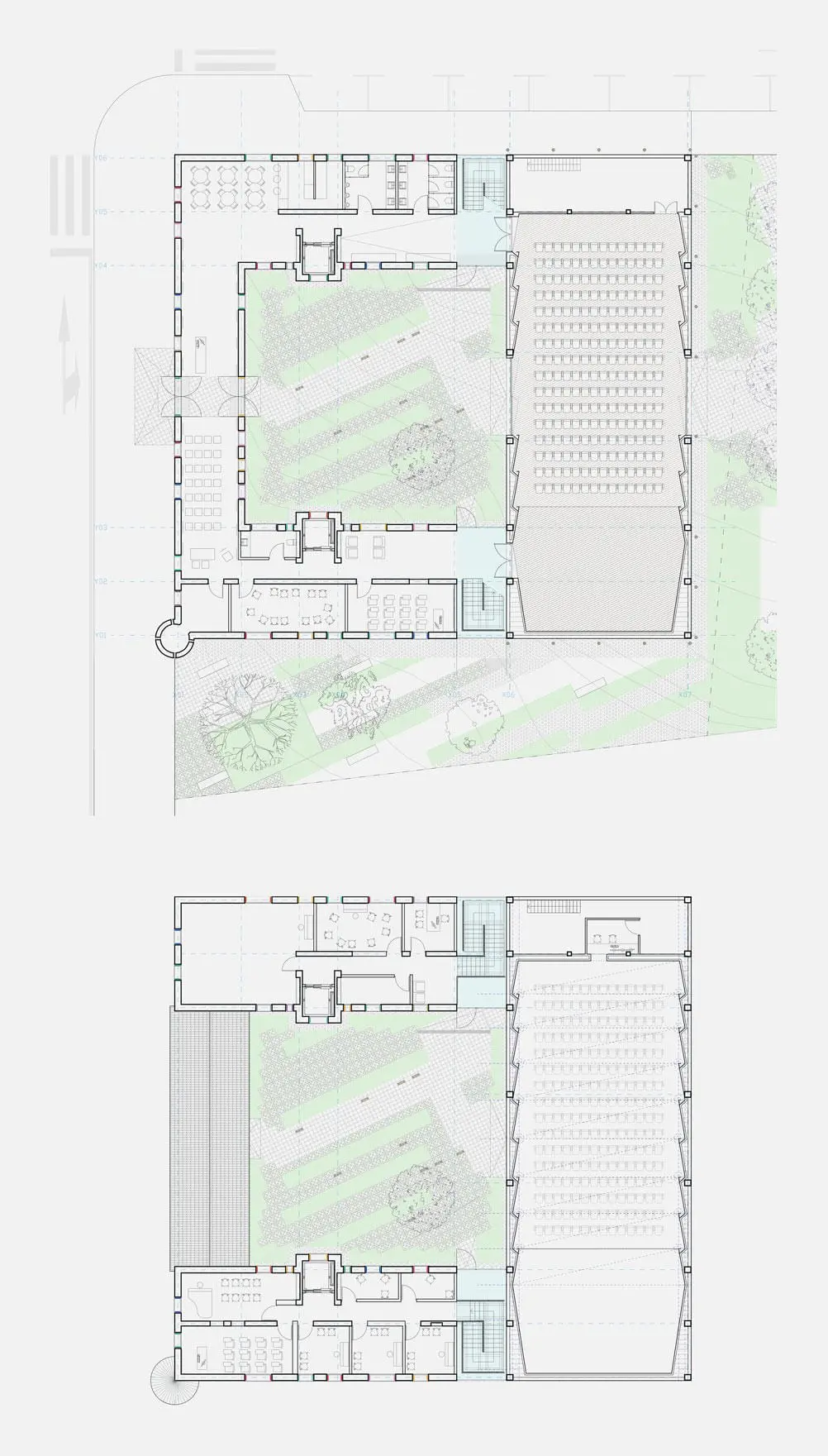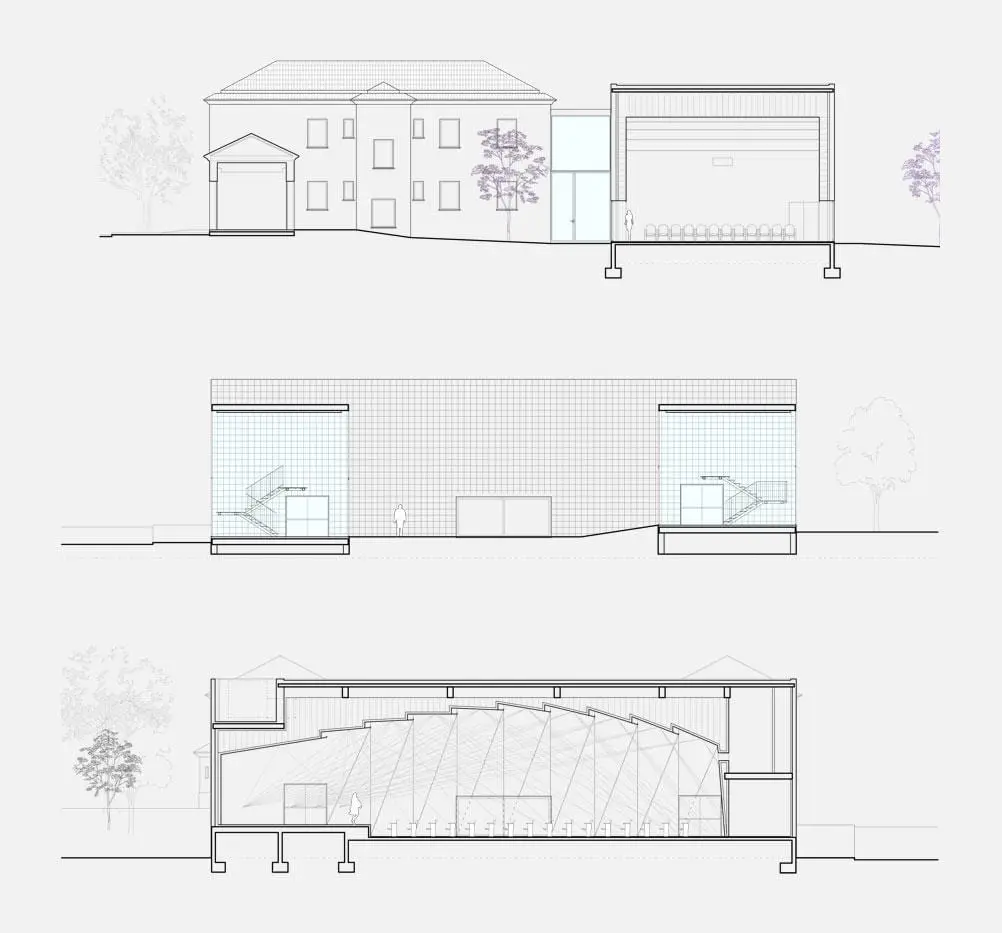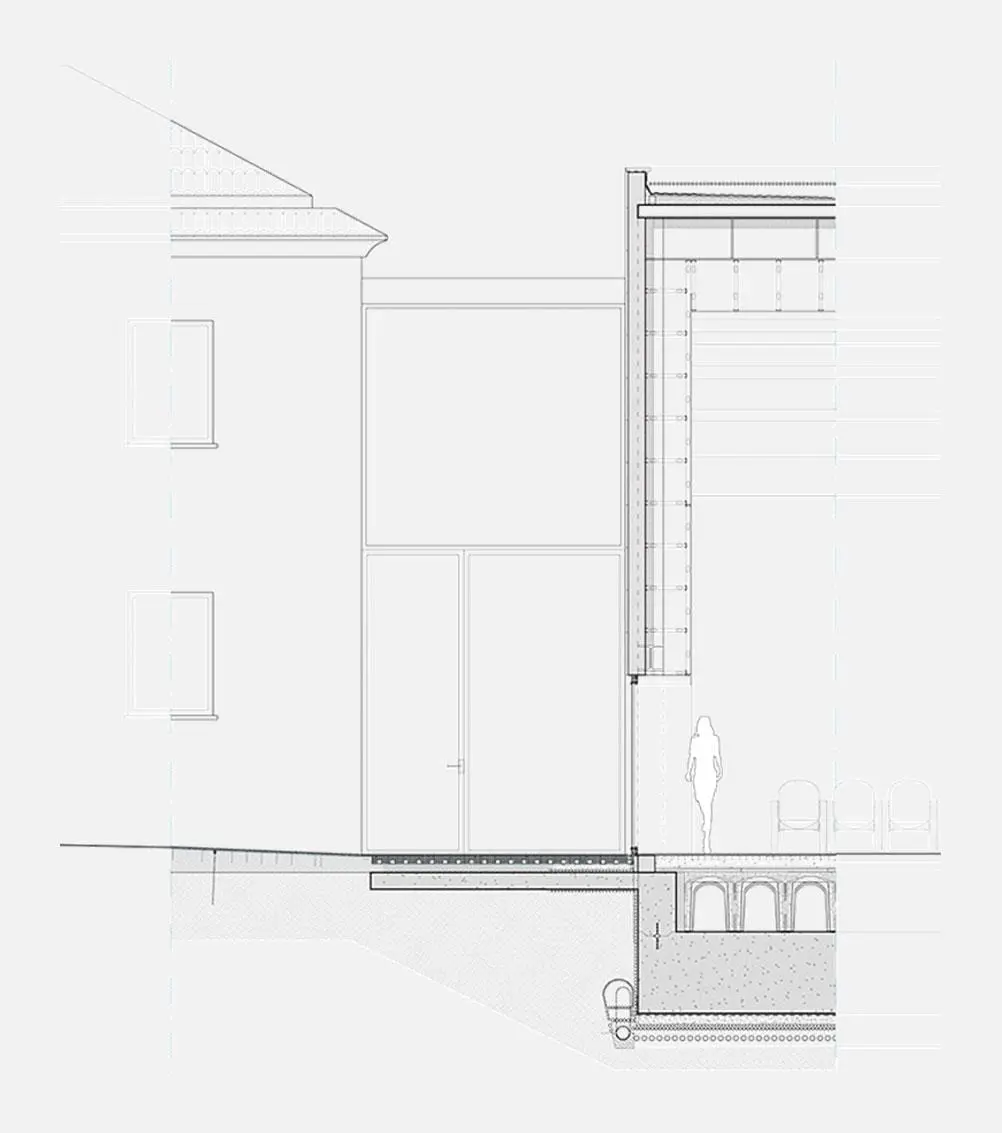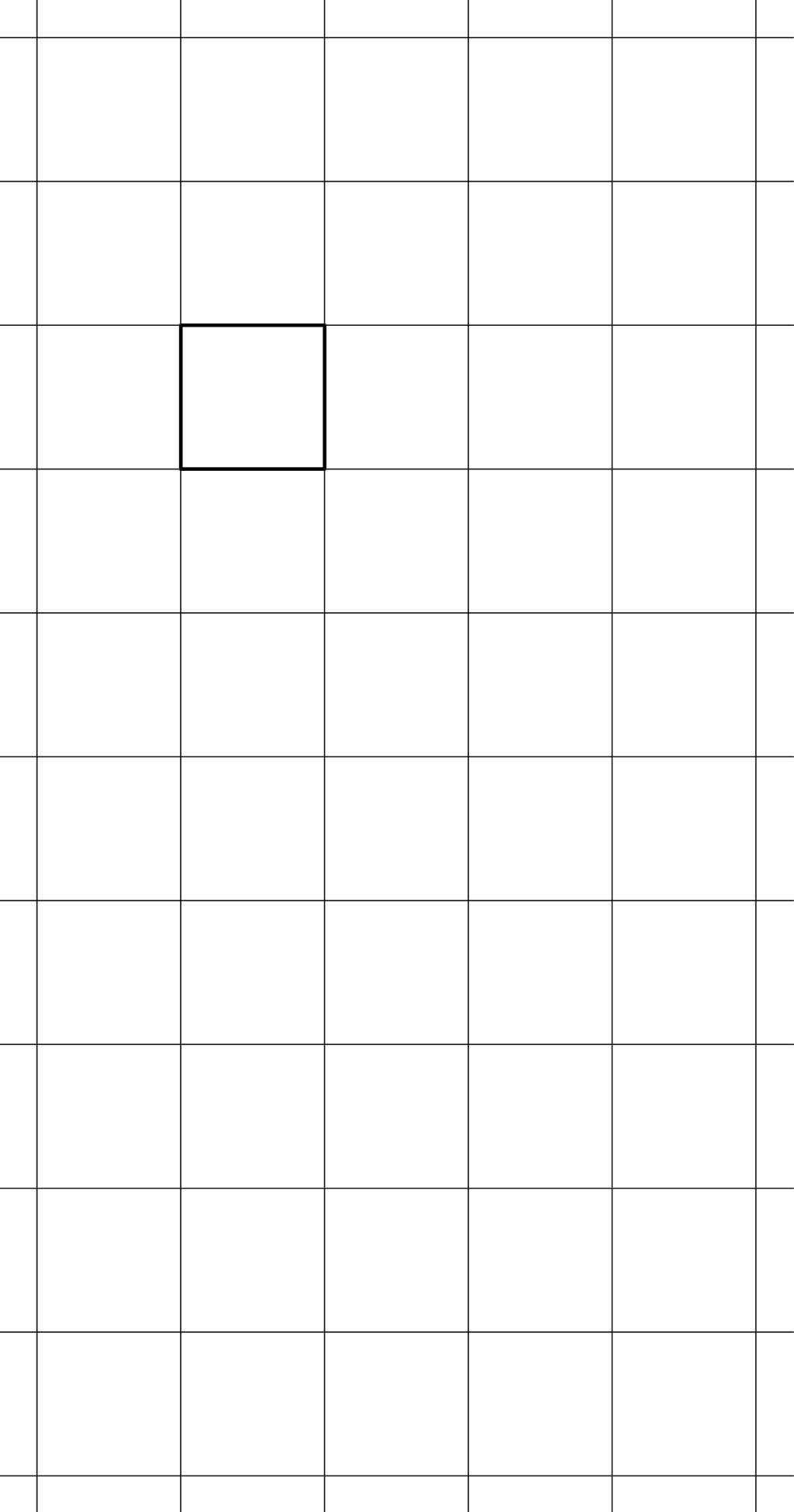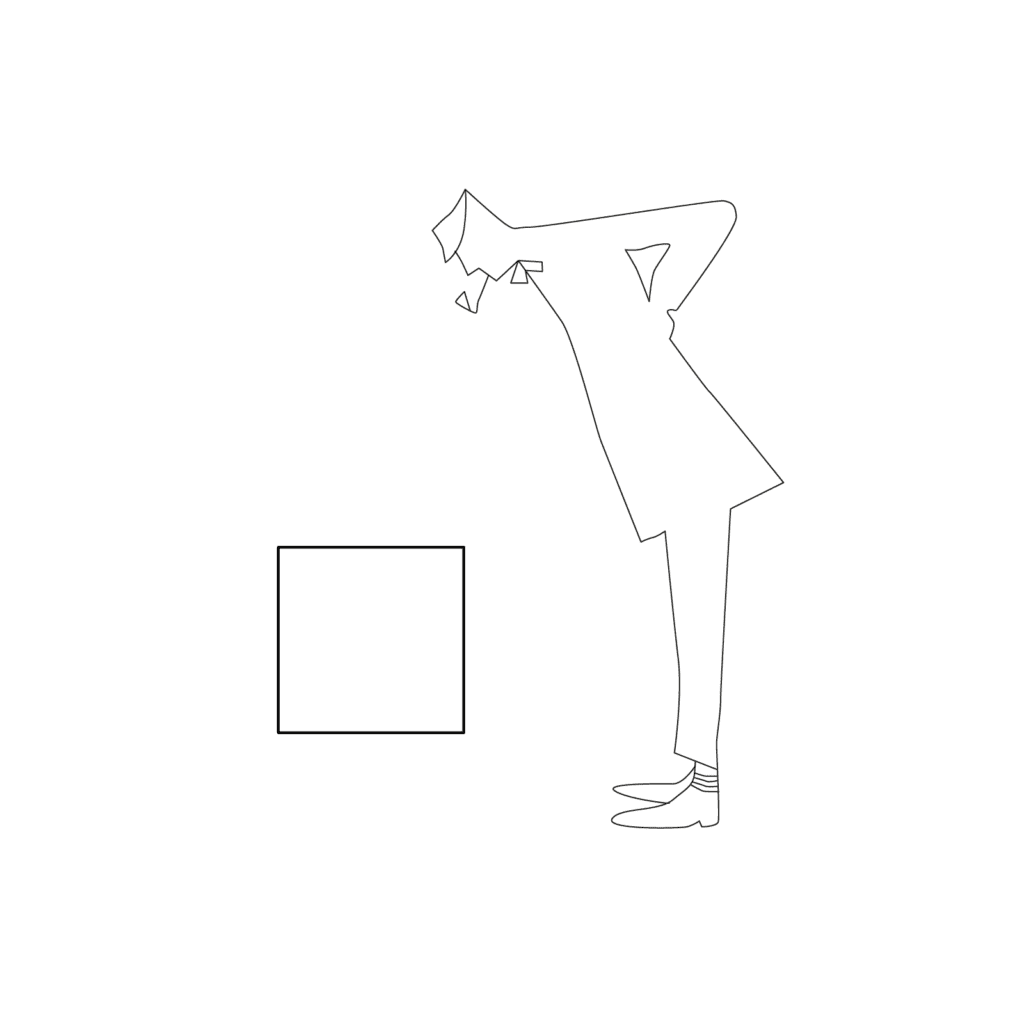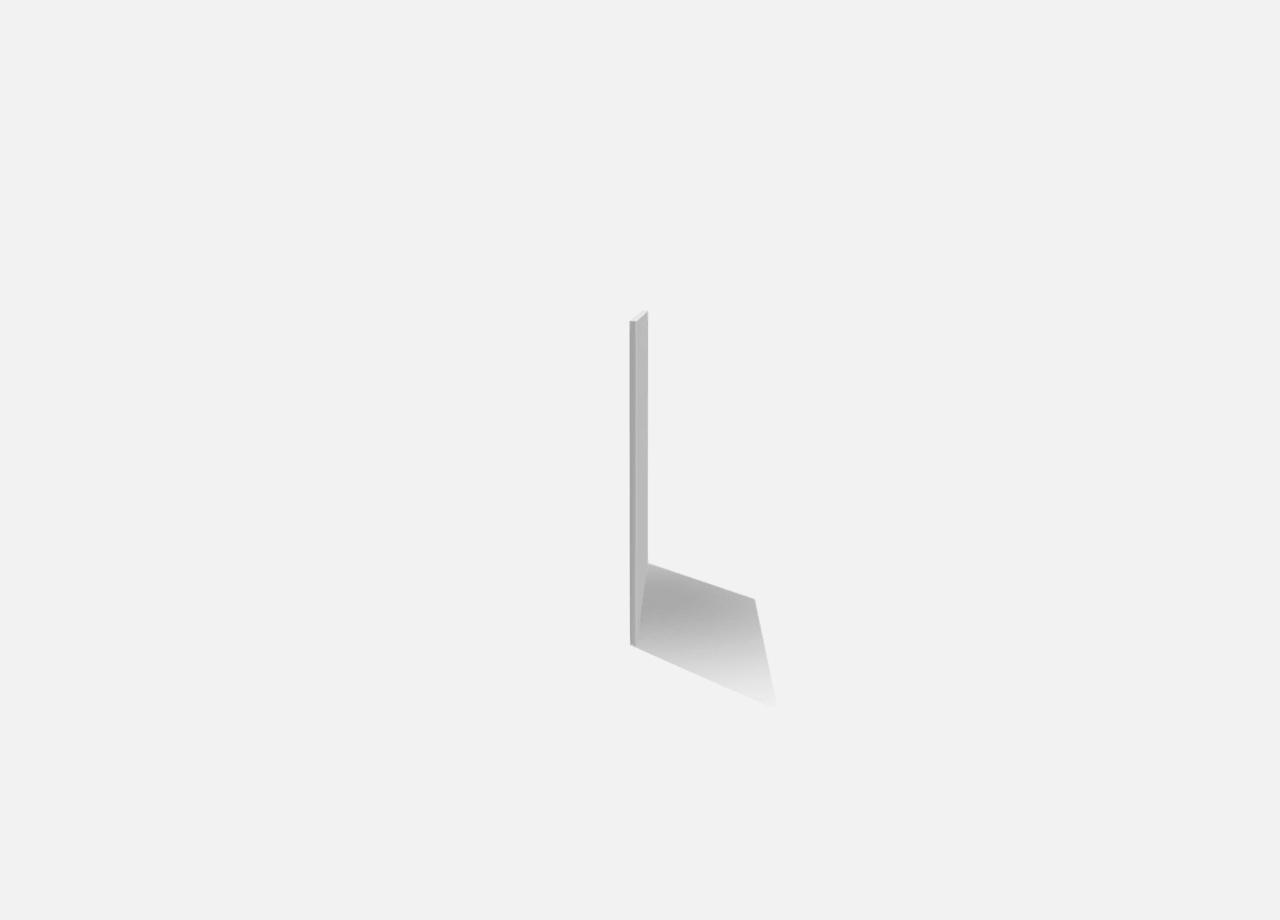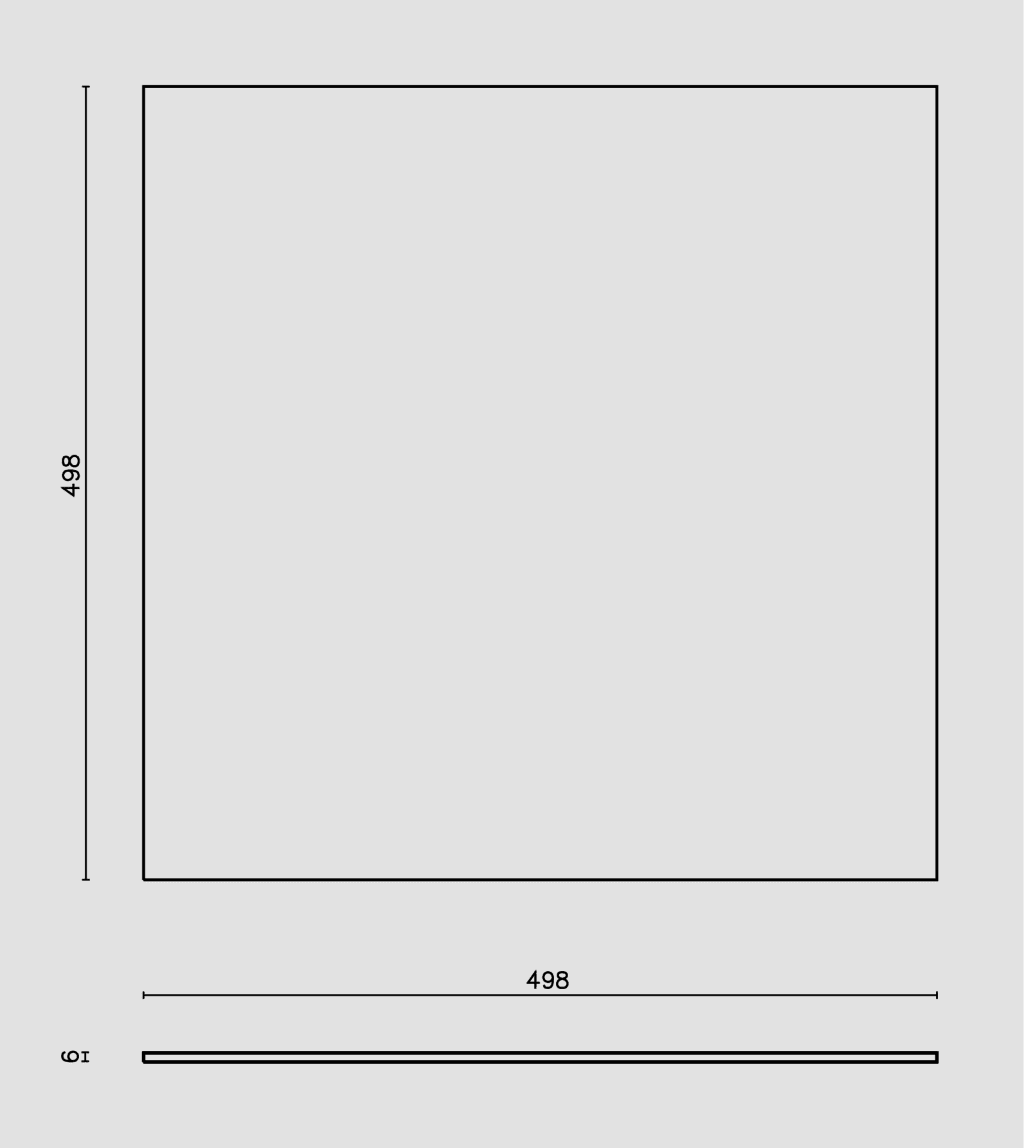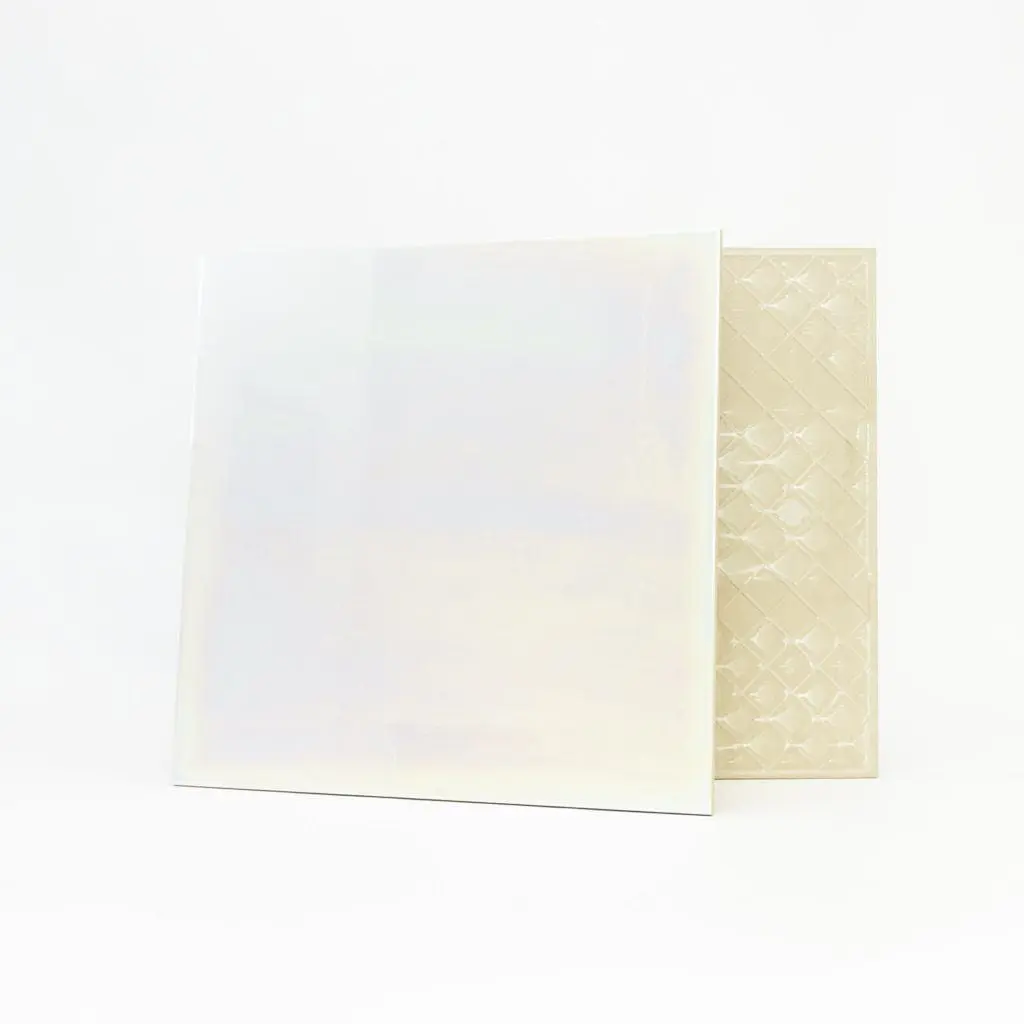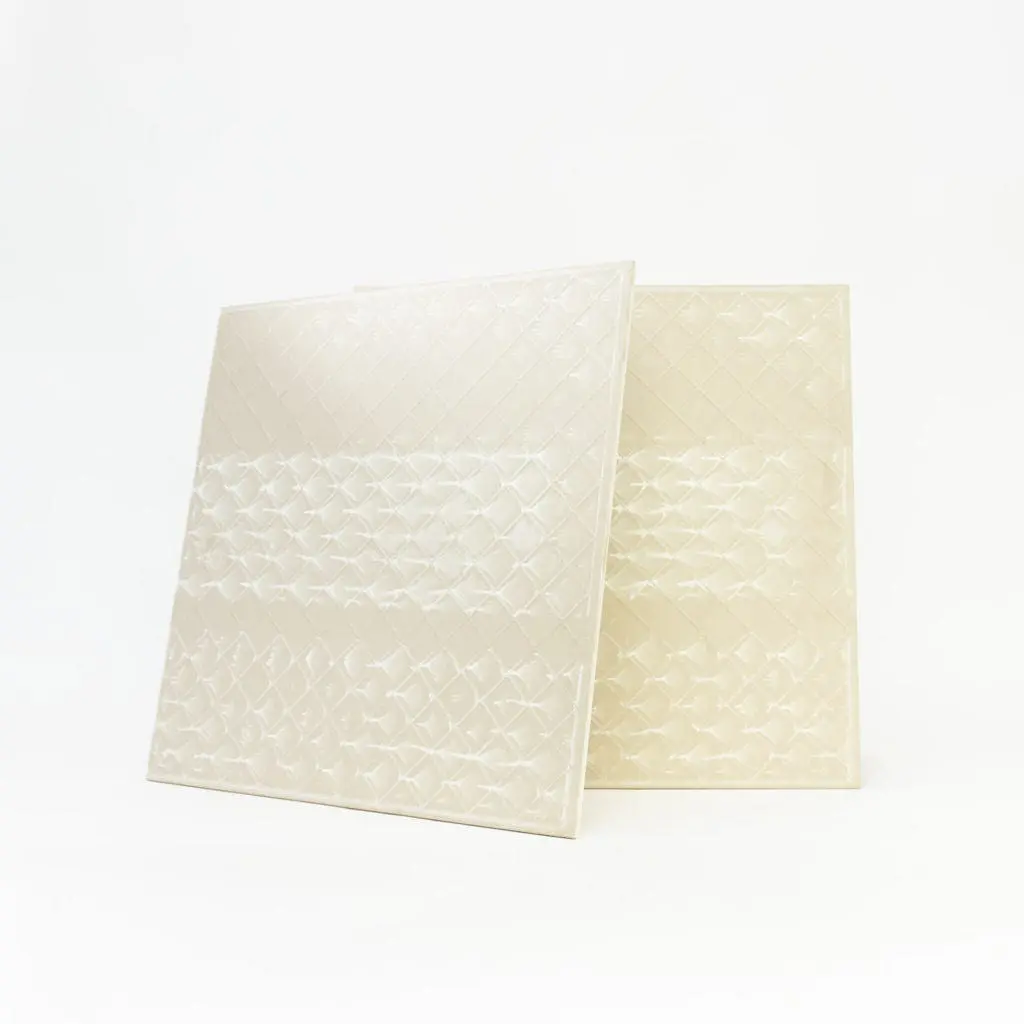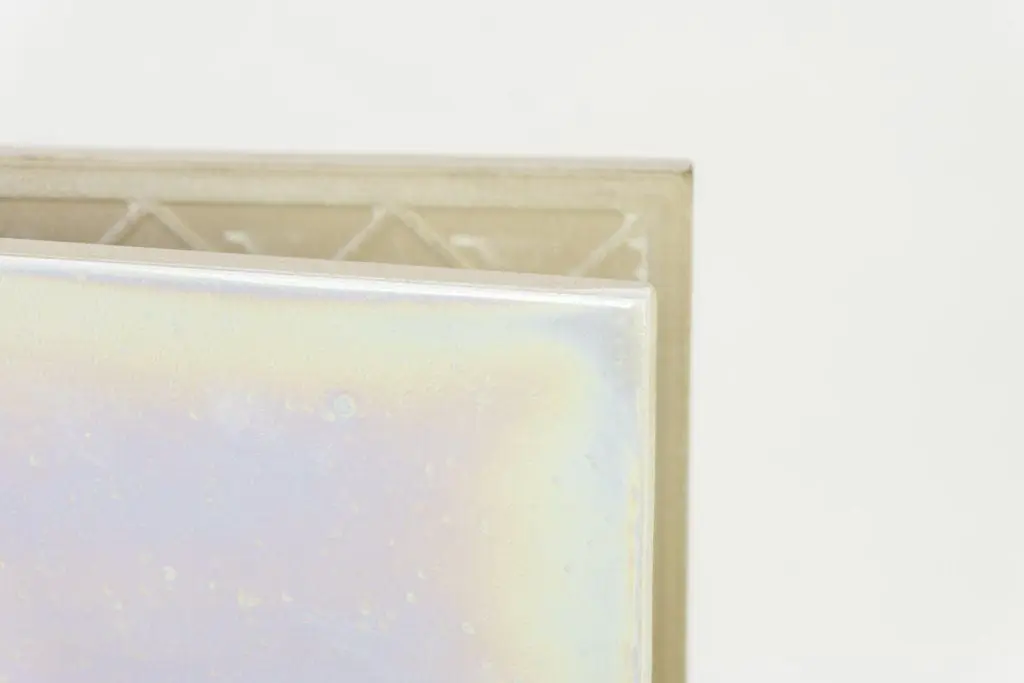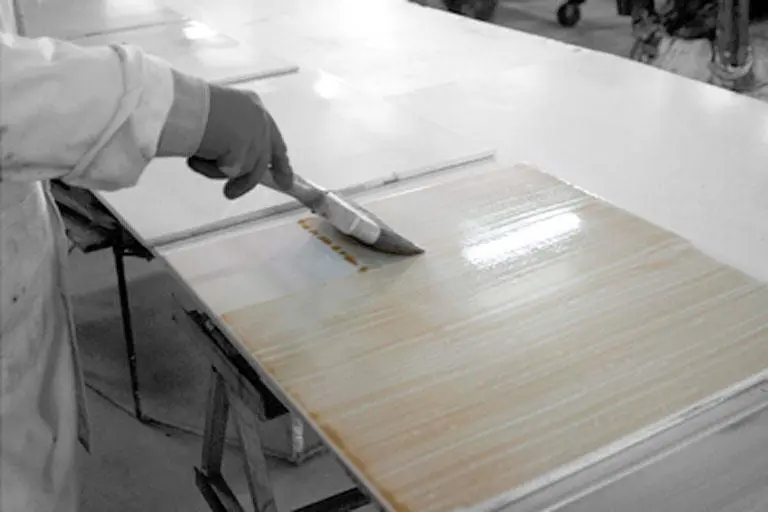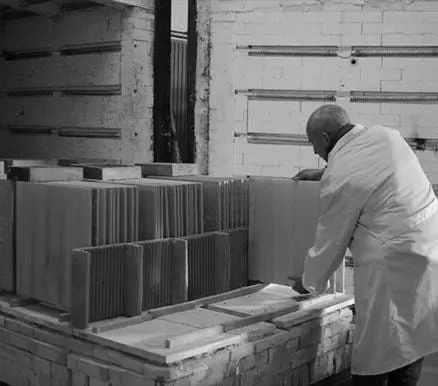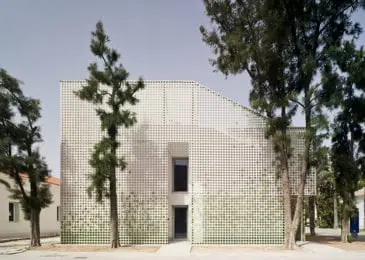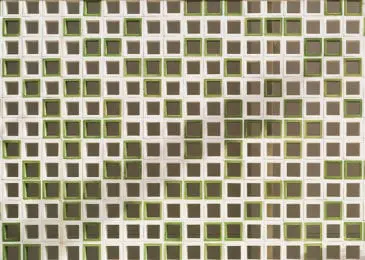Algueña is a small town in the interior of the province of Alicante, with a population of 2.000 and an economy based on agriculture and the marble industry. We were asked to create a building that was capable of bringing together all of the different activities associated with the world of music and culture that take place in the town, together with cultural promotion in the future. We were hired to seek out an opportunity, give it structure and make it a reality. Faced with this situation, together with the creation of an extensive programme associated with music and a maximum budget of 562.800 €, we initially proposed refurbishing a former Civil Guard barracks that had been empty since the 1980s, providing us with a surface area of 670 m2 that only needed adapting, and the construction of a new auditorium measuring 350 m2 and 230 seats. The second stage would involve the creation of a park with an open-air auditorium that would serve as a connecting point between the town and its area of future urban expansion.
At political level, the need was to create a building that would be a recognisable and usable landmark within the town, which was previously lacking any emblematic contemporary structures. The creation of a recognisable landmark, in architectural term, is frequently associated with endless budgets, astounding materials and sculptural shapes. However, this project focused on creating a landmark with a low cost approach, based on two concepts: the psychology of perception with the use of vibrancy and brilliance, and the concept of shape, with a rounded appearance and proportions in line with its industrial landscape, based on the use of ceramic tiles.
Ceramic piece. The choice to use ceramic tiles with a mother-of-pearl or rainbow effect was based on the idea of creating a vibrant structure that is constantly changing, either as a result of varying lighting conditions or through the movement of the observer, making the building vibrate, changing its colour, saturation and depth. The decision to use this material, created especially for this project using firing, glazing and metal depositing techniques to achieve this appearance, was based on the decision to not create a tectonic or formal situation, but instead a perceptive situation. The technique used was based on choosing a porcelain base material that was resistant to freezing and guaranteed for outdoor use. Each tile is dry pressed and then fired three times: the first bisque firing at 950 ºC, then a second time to fire the white base glaze and vitrify the bisque at 1.180 ºC in a fast cycle, and then a final firing to achieve the mother-of-pearl or metallic effect, at approximately 780 ºC.
Tile of Spain Awards ASCER 2011. Prizewinner Architecture category
